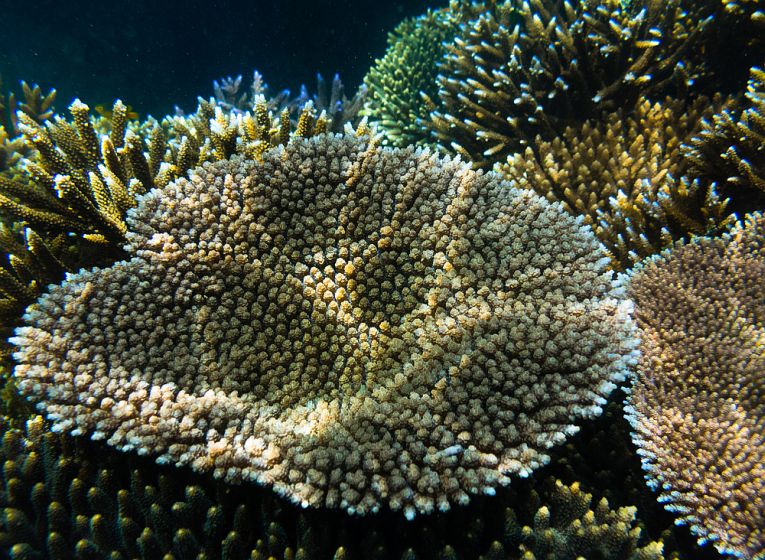When a coral reef broadcasts its spawning gametes into the ocean, he synchronisation over a large area is vital. The individual coral animals use moonlight to judge the correct moment in time. Marine organisms and human females use moon phases to regulate many biological processes orbiorhythms
. If we were to take the Great Barrier Reef (GBR), the mass spawning of corals represents the largest reproduction event on earth, or anywhere else as far as we know. 130 species of scleractinian (hard) corals and many other animals all spawn within a few nights. To them it’s all a midsummer night’s dream.
, although we still need to work out how the fine tuning of surface temperature (especially as it rises in the future), salinity and diurnal light cycles, especially sunset, interfere with the lunar influence.
Having optimised the chances of their sperm meeting their eggs, the corals would be able to relax and build up resources for growth and the next spawning. Acropora millepora samples were taken 3 months before an expected spawning to investigate any change in gene expression when compared to a sample at full moon and new moon when spawning was not taking place. RNA transcription was found to be responding to the lunar cycle, especially at midnight on a full moon. The paper was written for the journal, eLife as Signaling cascades and the importance of moonlight in coral broadcast mass spawning.
The authors were Paulina Kaniewska, Shahar Alon, Sarit Karako-Lampert, Ove Hoegh-Guldberg and Oren Levy of the University of Queensland, and Bar-llan University, Israel.
Some coral colonies from the Heron Island reef flat of the GBR were subjected to special conditions to investigate the mysterious influence of external (exogenous) factors. They could then be compared with the change in RNA transcription which represented endogenous control. The 3 special chosen conditions were ambient light conditions of the reef, low-light conditions and dark (shaded) conditions to block moonlight from sunset to sunrise, all investigated from 8 days before spawning.
RNA transcription responded according to the day of the month and the level of moonlight. For example, at midnight on a full moon, the Acropora spawned under ambient conditions, but not under dark or specially lit conditions. 184 RNA transcripts could be identified as only varying for spawning. It is likely that cryptochrome and opsin molecules were stimulated to cause the coral’s light adaptation. It is thought that receptors and signalling cascades would then have created cell migrations, several physiological changes and then gamete release from the organisms with a highly synchronised mechanism.
A further experiment tried extending the light regime, including the use of red light (620-700nm.) This regime, given otherwise normal (ambient) conditions succeeded in producing spawning at the correct time, while green or blue light, or high intensity light could not achieve the same result. Some conditions altered the spawning time by up to 48 hours, while many simply prevented the activity. The influence of these other colours could therefore be important. By far the most important finding is that moonlight is highly significant to spawning. The use of spawning to regenerate those many reefs that are disappearing under changing conditions is also relevant to the big picture. If touristic areas display much light, it seems unlikely that at least some and probably almost all corals will fail to spawn in the area. The Red Sea was specifically mentioned in this paper, where tourism is probably one of the most important sources of income to economies.
The University of Queensland, and its Heron Island marine station were involved in this paper by Catalina Reyes-Nivia (and Ove Hoegh-Guldberg again!), which reveals more on the more general pollution of coral reefs.















